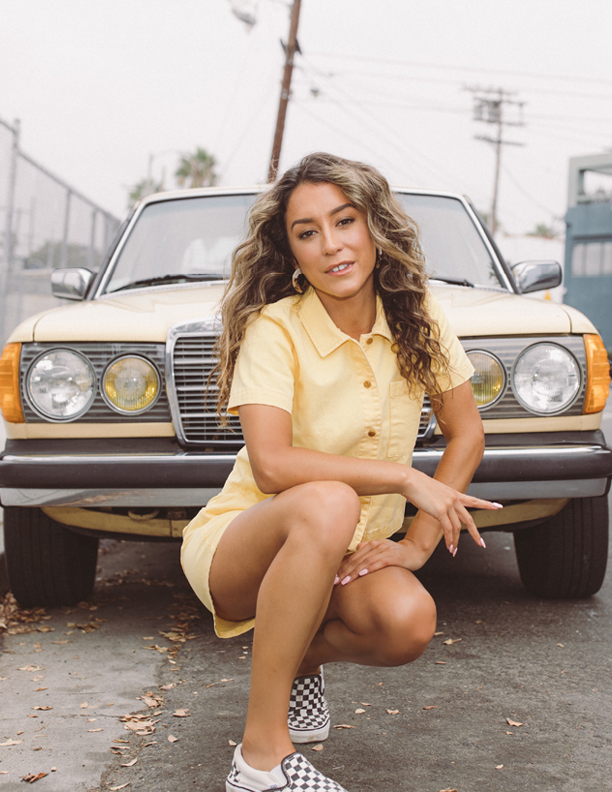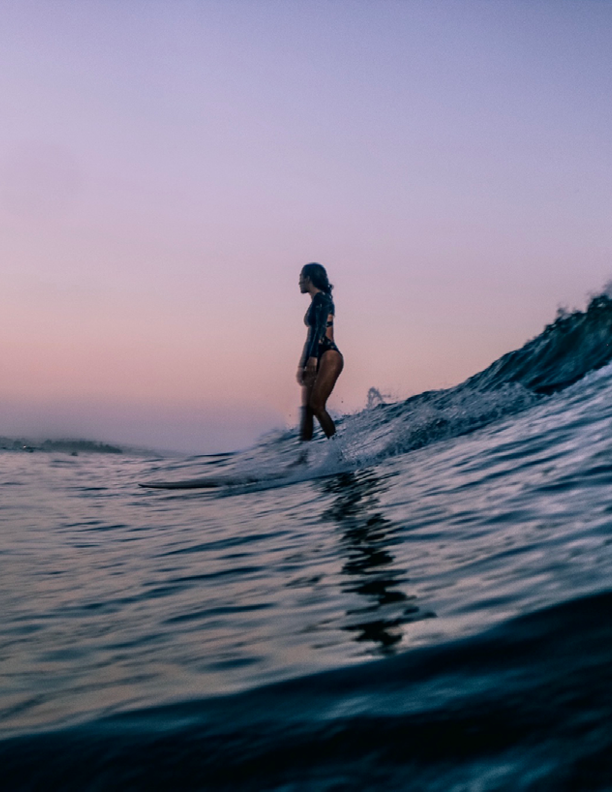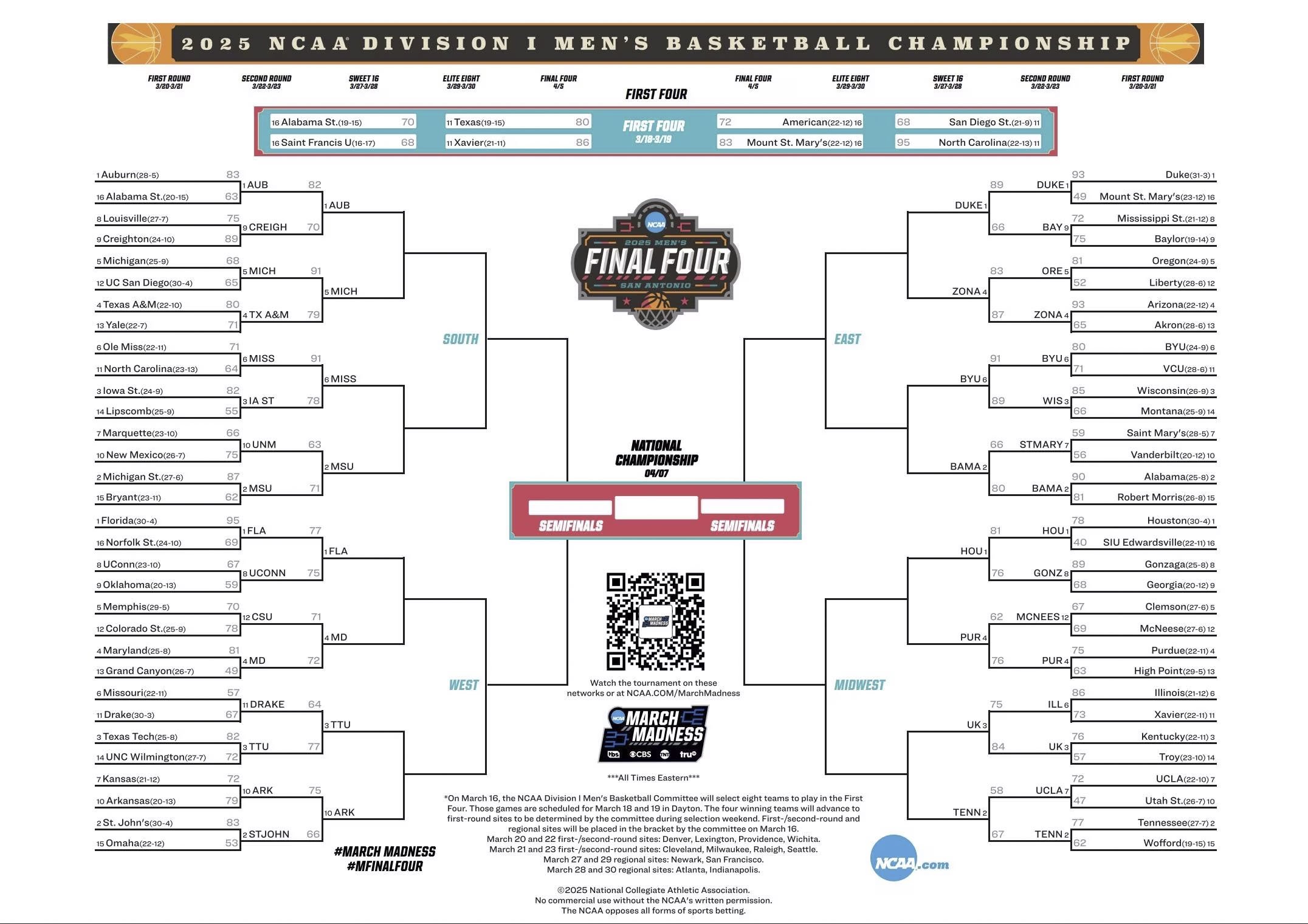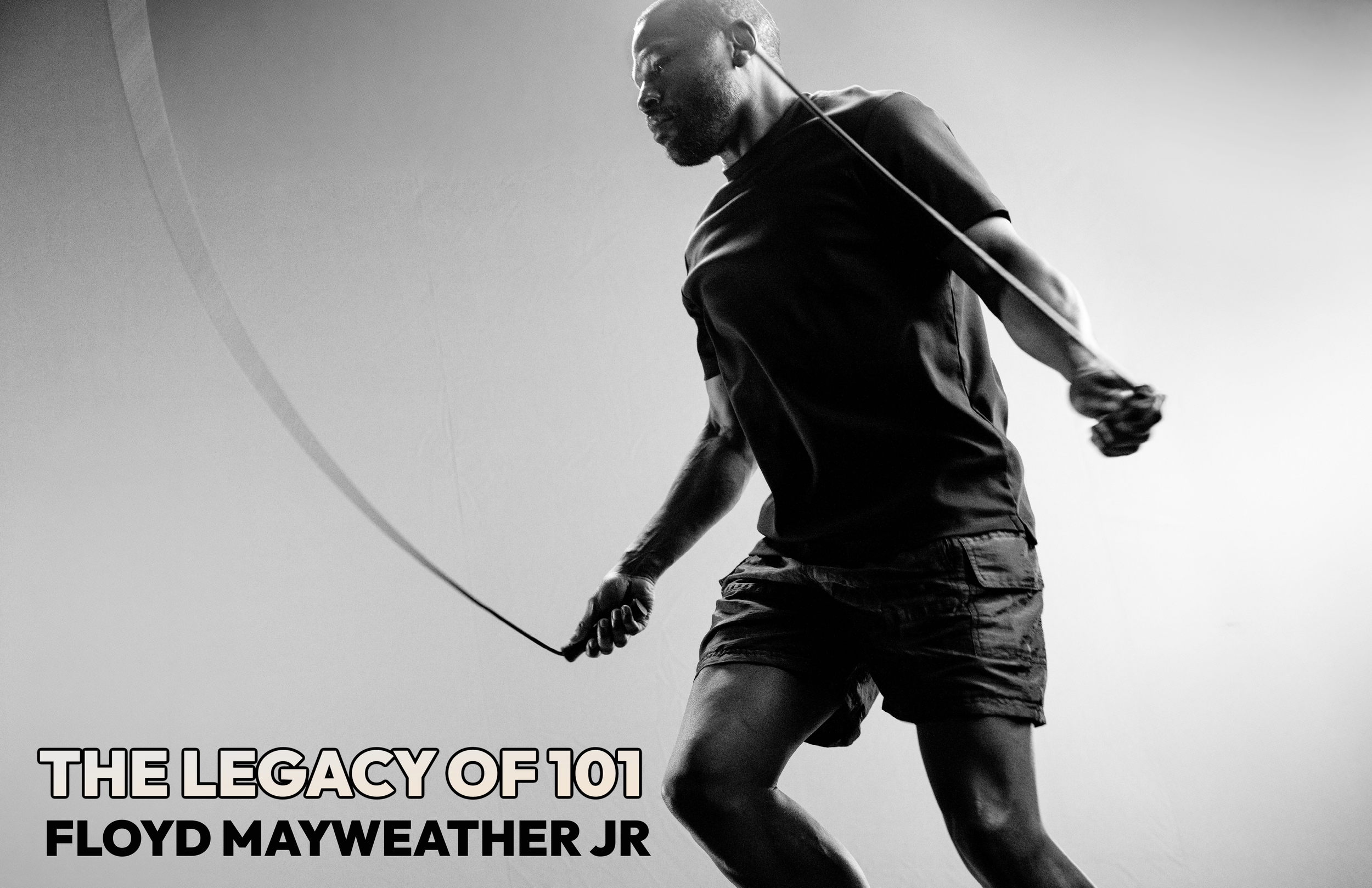We enjoy a great docuseries where we get to follow our favorite sports and get behind the action to find out how it all comes together. Prime Video's 4 episode series, Surf Girls Hawai'i follows 5 native Hawaiian females as they take their shot on obtaining a spot in the world tour. We follow Moana Jones Wong, Ewe Wong, Maluhia Kinimaka, Pua DeSoto, and Brianna Cope as we see them navigating their season, training, and interacting with their friends and family.
We caught up with Monica Medellin, Creator and Executive Producer of this docuseries. We wanted to find out more about how she became a fan of this action sport, being a surfer, working in the surf industry, and the importance of storytelling to amplify voices that are underrepresented but have powerful points of view.
ATHLEISURE MAG: We’ve personally been a fan of your work for awhile so it’s exciting to be able to talk with you to know more about you’re your docuseries, and what you’re working on that’s coming up!
MONICA MEDELLIN: Amazing! I’m so excited! I think that this is perfect because every body that knows me makes fun of me because athleisure is all I wear.
Thank you so much for highlighting me. I feel like a unicorn in this space. I just turned 30 and this all happened before then and it seems like the tides are changing and there are very few women that are like me in this position. So I really want to share my story and to hopefully inspire more storytellers in narratives like this.
AM: Absolutely!
Before we get into talking about the docuseries, we want to know more about you. What was the moment that you realized that you wanted to be a filmmaker?
MM: Oh, I mean, I feel like I was destined to be a filmmaker ever since I was a little girl. I couldn’t really identify that that was what I wanted until later in life. I've always been involved in sports as a child. My mom was a single working mom from Mexico and she raised me on her own.
Through that, she found different sports programs and extracurricular activities and that’s where I really fell in love with different sports and it started with more traditional sports like volleyball, basketball, and soccer. Then I moved into gymnastics and then we both discovered surfing while we were walking along the Santa Monica Beach and at that point, I had started skateboarding, surfing, and exploring these non-traditional sports.
I actually used her old camcorder to film myself skating! That’s what I did with my friends on the weekends, so obviously the production value was what it was!
You know, I started documenting sports from a young age and I started documenting myself as a young girl participating in those sports from that time. You know from there, I obviously played sports in high school – I was the team captain of the volleyball team, I would teach at surf camp over the summers and I moved to university and I studied Journalism at the University of Oregon. So, this theme of filming our experiences as women in sports has been something that has been a thread throughout my entire life!
AM: Wow! It also seems that a lot of your films as well as commercial work that you have done has also focused obviously on sports, but also covering underrepresented groups as well. As someone who is Black and has enjoyed sports such as snowboarding where people don’t think of us playing it, I like that you’re showcasing what is being done that people don’t necessarily think of.
MM: Right and I think that that’s something where you want to be niche, but not too niche where you miss out on telling other stories as well. I think that my main thing is highlighting and shining a light on stories that are underrepresented in the mainstream. That is the essence of my work. It doesn’t just need to be sports, it can be in anything. I mean, when I worked at the Los Angeles Times in 2015, I was helping launch a new platform that talks about this emerging American identity with race, immigration, identity, what does it mean to be American, but also never to really see yourself represented in the story in that way. So, I think that that time at the Los Angeles Times and producing documentaries around those topics really did shape the direction of how I approach my storytelling. Like sure, if I’m telling a story about an athlete, that’s in sports, but I want to uncover who the person is behind the athlete, what is the human experience that we can all relate to because ultimately, even when you see Surf Girls Hawai’i, it’s not just about surfing. It’s about coming of age, it’s about sisterhood, it’s about supporting each other through challenging times, and navigating life. So, I think that that is my approach through all of my storytelling that makes it universal whether you are interested in the sport or the topic itself.
AM: Absolutely!
What was the first project that you did that you realized that you wanted to do this as a career?
MM: Hmm, it’s actually funny, because my first film that I created was about a young Latina surfer in the Bay Area. She was part of a program that helped underrepresented youth get into the sport of surfing, get into action sports, and that film actually premiered at the Los Angeles Latino International Film Festival here in LA. That moment of seeing my work and my film, premiered at The Chinese Theatre, in Hollywood was such a monumental moment for me because I could see that this kind of storytelling was valued. I could see the reaction of the audience and I could see the emotion and I could actually feel the energy in the room. So, I feel like the LALIFF selecting my film to premiere at the Chinese Theatre in that way was a really defining moment for me. I knew that I could really make something out of this career and hopefully, tell more stories. At that point, I was still in my early 20’s so it was just the beginning, but I think that that was the moment that I decided to pursue this full time.
AM: We love surfers! This year alone we had the honor of speaking with Carissa Moore as well as Kai Lenny as covers for Athleisure Mag. You also surf – what is it about this sport that you enjoy so much?
MM: I think surfing is such a unique sport because it’s not just a sport. It’s a lifestyle, it’s a culture, it has deep roots around the world, and had I known that this sport is originated by people of color and women of color, I would have felt that I belonged in it sooner. (Editor’s Note: The origin of surfing can be found in various cultures as far back as the Incas in 1590 when a Jesuit missionary José de Acosta published it in Historia Natural y Moral de las Indias. In West Africa’s – Ghana, Ivory Coast, Liberia, and Senegal and Central Africans in Cameroon have had various accounts of this activity in 1640, 1679, 1834, and 1861. In Polynesia in 1769 there is documentation of he’e nalu which translates to wave sliding by Joseph Banks as he was on HMS Endeavour during the first voyage of James Cook while the ship was in Tahiti.) I didn’t know anything about the history of surfing until I met another Latina surfer who shared with me this deep history. After discovering that, I made it my life’s mission to try to tell the world that this is the truth and that this is the history of this.
I think that with surfing, it’s so special for that deeper reason, but also I think that it’s a way of connecting with nature to get outside and get off your phone. You have no way of communicating with anybody when you’re out there. It’s your time to exist and enjoy yourself and I think that it resonates with a lot of people. I think that when I first started surfing in Los Angeles, the lineups looked a lot different than they do today. Today I actually paddle out and I see more women, I see more women of color and I actually see friends every single time that I go. I think that this surf culture has been defined by advertisements, brands, the industry, but we are reclaiming what it means to be a surfer and you’re seeing that happening in your local lineups. You’re seeing that happening through Surf Girls Hawai’i, you’re seeing that happen through different lenses, I think! I think that that is what makes surfing special. It’s just, there’s nothing else like it honestly.
AM: As the creator of Surf Girls Hawai’i, what drew you to telling this story?
MM: Surf Girls Hawai’i is what I have dreamt of ever since I was a little girl. We saw Blue Crush released back in 2002, which was my favorite film, and I really identified with Michelle Rodriguez (Fast and the Furious franchise, Machte franchise, Resident Evil franchise), who was another Latina and I mean, that’s just one part of it. When I was working in the surf industry, I noticed that major mainstream platforms just had more coverage of male surfers. You barley saw women and in advertisements, it’s still really common to see a surfer girl in a bikini and a man on a wave surfing.
AM: Right.
MM: You walk down to any surf shop and that’s still the reality of our time in 2023! Actually, while I was working at the League (World Surf League), I started a personal archive of my favorite surfers who were women, who I thought deserved the spotlight and I pitched an idea that would eventually push the company to promote men and women equally on our social platforms. I think that since then, we have seen a shift. I just really wanted to be able to highlight women that I felt didn’t have a seat at the table. I think that through Surf Girls Hawai’i, they are finally getting the recognition that they deserve. That’s really cool that I helped spearhead that effort and identified this talent early on.
AM: For those that have not seen this docuseries, can you give us the premise of the show, and also, how did you decide to select the 5 Native Hawaiian female surfers that are featured in the docuseries.
MM: Surf Girls Hawai’i follows the next generation of native Hawaiian, female surfers as they compete at an elite level to earn a spot on the world tour of professional surfing. Surf girls is about a sisterhood of native Hawaiian surfers who are on the cusp of becoming pro and this is the most elite level that they have ever competed on and they are competing against each other, but also together in a lot of different ways and they support each other through that. I think that what makes it special is the fact that oftentimes when you see shows that center women, you see maybe cattiness or drama between the women. You see this marketable yet damaging portrayal of female relationships.
I think that what’s different with Surf Girls Hawai’i is, even though they are fierce competitors, and they are competing for one spot, they all support each other through this journey. That’s because they all know that if one of them makes it, everyone makes it because this is more than just winning for their own personal gain, this is about representing native Hawaiian culture at the highest level of surfing. I think that carrying that responsibility, and that legacy, is what makes this highest stakes in a lot of ways. You don’t need that cattiness or drama between the girls. I think that that is the premise, but also what makes it different.
AM: From your perspective as a filmmaker, how do you go about creatively organizing all of this. As you said, they’re all there for that aligned goal, but they are also individual people. How are you weaving that story and kind of planning it in your head especially when it’s only 4 episodes! By the end I was wanting to see more about these women, wondering if there would be another season, would the same surfers be followed – so many questions!
MM: The response to this show has been so overwhelmingly positive and I have been told that it is over performing. It shows that there is a gap and this storytelling was absolutely needed and 4 episodes did the trick! I think that that worked and I think in going back to your question, this cast is so special because on the surface, they are all native Hawaiian pro surfers that share this bond and share their culture together. But what I wanted to really accomplish with this series was to show them as multi-dimensional, multi-faceted women. They’re all different and all have different interests and different mindsets. They’re all different because you have on the one hand, Maluhia who is 26 years old, considered older to be competing and is at the crossroads of deciding on whether she wants to be a professional athlete and fulfill that lifelong childhood dream or pursue her education. She did both. She got her degree from Stanford and she is pursuing her PhD at UH Mānoha – all while competing on the WSL tour. I think that that is super unexpected. That defied expectations and I think that each character defies expectations of what you would think of them on the surface. So that’s just one example of how we approached the storytelling around each woman. How do we paint them as more than an athlete? Because each character is more than an athlete.
AM: What was it like working with Hello Sunshine on this project?
MM: I’ll start with Hello Sunshine. Hello Sunshine was honestly a dream partnership. Like we were aligned in our values before we even made the show together. I think for me as a creator, it was really important that the team working on Surf Girls was women-led and women-run, that is the essence of what makes Surf Girls Hawai’i what it is. I think that Hello Sunshine’s mission of changing the narrative for women aligned with my mission well before the final product. I think that Surf Girls put this native female Hawaiian experience at the forefront and Hello Sunshine invested in that, believed in that, and they saw that from the beginning. I think that that’s brave. This talent, they’re low profile, lesser known names outside of the surf industry, but that didn’t matter to them and I think that they just saw the magic. I also think that the Hello Sunshine team was very collaborative and supportive of hiring women behind the camera and making sure to work with my recommended Hawaiian and Hawaii local creators and crew. I just felt like the set was forward thinking and they understood the importance of picking a team to tell a story and in the best way.
I actually created and directed the original digital series that sold the show, and the vision stayed true throughout the process. I think that that is really hard to do actually. I feel that the women were really portrayed in a positive light and the culture wasn’t sensationalized. That was really really important. That’s my bit on Hello Sunshine!
AM: That’s amazing to hear. What has been your biggest takeaway in doing this docuseries?
MM: Oh my gosh, so much! I mean, creating and executive producing my first TV show, was an experience that I learned a lot from. I think that a big takeaway from the series is that you see the reactions from people that watched this and people are hungry for this kind of storytelling and they’re hungry to see women and women of color in sports. I think it’s interesting because this was technically made for Gen Z young women to identify with. But you see women of all ages responding to this and you see men of all ages intrigued, interested, and inspired by this story. So, I think that this is a story for everyone and that’s the takeaway – this story is important and deserves a spotlight and we were the first to do it and that’s really, really special. We were the first female sports docuseries on Hello Sunshine’s platforms and this was the first female sports documentary on Amazon.
AM: That’s a pretty big first!
MM: That’s big!
AM: That’s awesome!
I’m sure you’re always working on different projects, is there anything coming up that you are able to share that we should keep an eye out for?
MM: Yeah, so 2 things! I just got back from Tahiti for a shoot with the Olympic Channel, so that’s coming up. Then, I have another underreported, but fascinating field that centers women of color and Black women in sport that is not highly covered that I am currently developing. I’m developing projects constantly so we can leave it at those things.
IG @monicamedellin_
PHOTOGRAPHY CREDITS | PG 52 Ryan Gladney | PG 54 Brie Lakin | PG 57 Katie McDonald | PG 58 - 63 Prime Video |
Read the AUG ISSUE #92 of Athleisure Mag and see TAKE IT TO THE WAVES | Monica Medellin in mag.









